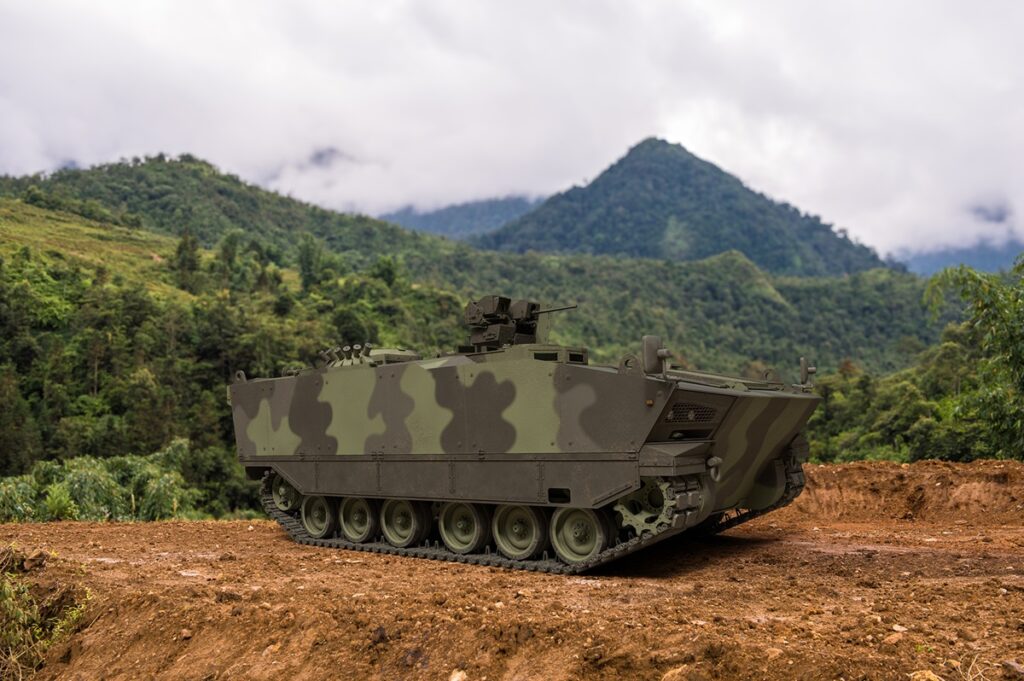Turkish defense manufacturer FNSS unveiled its conceptual design of the Kaplan Armored Personnel Carrier (APC) at the Saha Expo in Istanbul.
The armored vehicle was jointly developed with Indonesia’s state-owned arms company PT Pindad in continuation of their long-term cooperation agreement signed in 2015 to meet the Indonesian Army’s requirement for a 30-ton-class tracked personnel carrier.
The latest Kaplan APCs are set for production by 2025, with work on the first vehicle to take place at FNSS facilities in Turkey and the second at PT Pindad in Indonesia.
They are scheduled for delivery to the Indonesian Army by the end of 2026.
Tailored for Modern Combat
The Kaplan APC incorporates enhanced parts and sub-systems with the FNSS Marine Assault Vehicle and the tank’s predecessor, the Kaplan MT, which the Southeast Asian country’s army received in March.
This next-generation armored vehicle is designed for all terrain and weather conditions with an advanced suspension system to enhance traction and reduce vibration. It can accommodate up to 13 personnel, including a driver, commander, and gunner.
To increase crew survivability in complex and lethal environments, the APC is fitted with a fire suppression system, air conditioning, and chemical, biological, radiological, and nuclear defense.
It features advanced ballistic protection, mine protection systems, and firepower against threats. An active protection system option against anti-tank missiles and rocket-propelled grenades is also offered.
With an open architecture, the Kaplan APC allows easy integration with various manned and unmanned turret systems, mission-critical equipment like Battlefield Management and Situational Awareness Systems, and different armaments, such as 30mm to 35 mm cannons and anti-tank guided missiles.
Additionally, it can be configured for mechanized infantry, reconnaissance, command and control, force protection, medical evacuation, recovery, combat engineering, and direct or indirect fire support.



